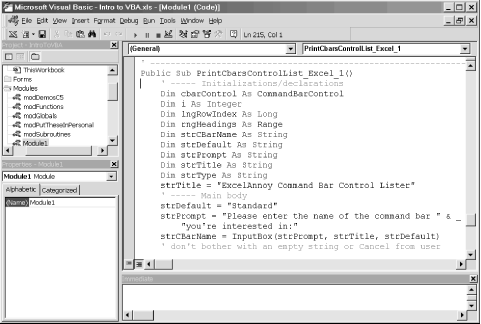Chapter 8. The Visual Basic Editor, Part I
The first step in becoming an Access VBA/DAO programmer is to become familiar with the environment in which Access programming is done. Each of the main Office applications has a programming environment referred to as its Integrated Development Environment or IDE. Microsoft also refers to this programming environment as the Visual Basic Editor .
My plan in this chapter and the next is to describe the major components of the Access IDE. I realize that you are probably anxious to get to some actual programming, but it is necessary to gain some familiarity with the IDE before you can use it. Nevertheless, you may want to read quickly through this chapter and the next and then refer back to them as needed.
Until the release of Office 2000, not all of the Office Suite applications used the same IDE. In Office 97, Word, Excel, and PowerPoint use the full VBA IDE, whereas Access 97 uses a simple code module environment. However, with the appearance of Access 9 for Office 2000, all four of the Office applications use the same IDE, as show in Figure 8-1. To start the Access IDE, simply choose Visual Basic Editor from the Macros submenu of the Tools menu, or hit Alt+F11.
Let us take a look at some of the components of this IDE.
 |
The Project Window
The window in the upper-left corner of the client area (below the toolbar) is ...
Get Access Database Design & Programming, 3rd Edition now with the O’Reilly learning platform.
O’Reilly members experience books, live events, courses curated by job role, and more from O’Reilly and nearly 200 top publishers.

